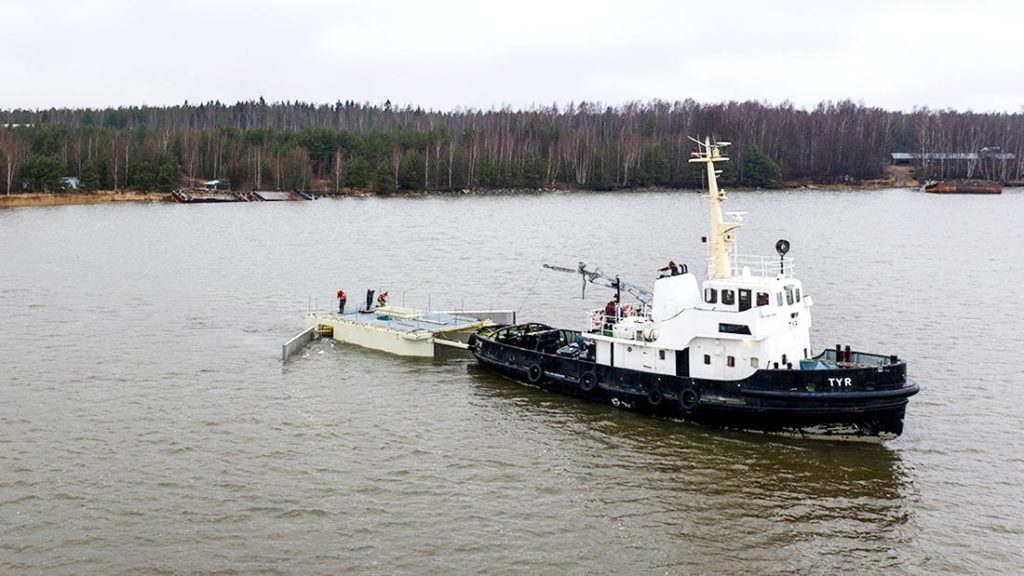Depending on the size and carrying capacity of the Oil Hunter, the frame of the pontoons can be constructed of either steel or aluminium.

Transport platform
The Oil Hunter is a catamaran-type oil-collecting transport platform, comprising two pontoons connected by a deck, which is equipped with oil collectors, containment booms and a sacking device.
The Oil Hunter is built to modernise and enhance oil spill response in rivers, coastal waters, archipelagos and seas adjacent to them.
Oil collection unit
The collection unit is formed by connecting, by means of two supports, the Oil Hunter to a towing vessel. The power source for the hydraulic functions of the collection unit utilises the power source of the towing vessel.
Collection system
The collection systems mounted on the pontoons comprise drum collectors, in which either 7 or 10 rows of brushes are installed, depending on the capacity required. The brushes are replaceable and the collection drum can be lowered and raised as required. The water circulation in the pontoon channels is adjustable depending on how much water circulation the brushes need.
Containment booms
The tubular, aluminium-frame containment booms are self-supporting. The hydraulically operated booms are controlled by means of a control panel on the deck of the transport platform. The containment booms attached to the outer edge stabilise the collection operation even in difficult weather conditions. The sweep width of the opening of the containment booms can be adjusted from 0 to 20 metres.
The boom design allows the use of three sweep widths:
1) by using only containment booms
2) by adding extensions to the tips of the containment booms
3) by adding inflatable booms to the tips of the containment booms, in which case a boom chain that smoothly moves with the oil is created, the sweeping width of which is adjusted by means of a support vessel.
In particular, thin oil tends to spread over a wide area and forms a thin layer. By manoeuvring an oil-gathering boom chain, the oil can be compacted to an oil layer when it reaches the collector, in which case it becomes attached to the brush fibres and the recovery is more efficient.